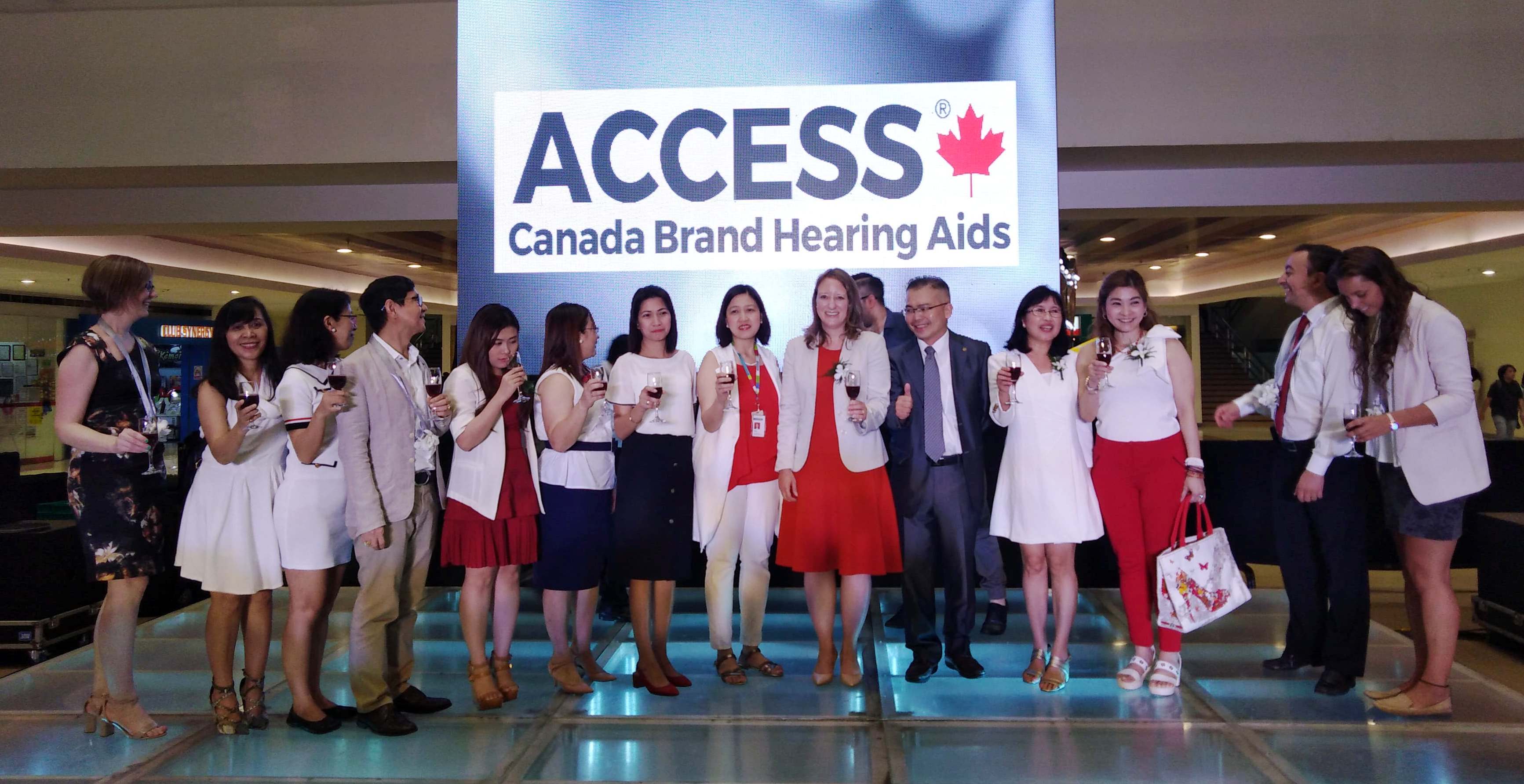More than 1 billion people worldwide suffer from hearing loss and are badly in need of hearing aids. The Philippines is no different. Many suffer from various levels of hearing impairment and have poor to no access to hearing aids that are usually expensive. This results in emotional distress because they are unable to lead productive lives.
But now, there is a chance for Filipinos with hearing problems to finally afford hearing aids. The arrival in the country of earAccess, Inc., a Canadian company that offers the ACCESS® brand of quality yet affordable hearing aids signals a tremendous opportunity for more Filipinos to be able to hear. They now have the chance to get out of the doldrums of lack of hearing and more importantly, live quality lives.
The ACCESS® line of hearing aids combines quality and low price and targets the underserved communities who cannot afford hearing aids. These products include ACCESS® 1 BTE 13 and ACCESS® 2 BTE 13 POWER.
ACCESS® 1 BTE 13 and ACCESS® 2 BTE 13 POWER are both entry-level, quick-fit and programmable hearing aids packed with utmost quality and advanced digital sound processors for high-quality sound and outstanding feedback cancellation. The two products come with voice clarifier, fixed startup delay and a notification feature in case of low battery. The audio settings can also be adjusted through a simple pivot of the trimmer to either a flat, gentle slope, slope or ski slope position. The two products also come with a 2-mm inner diameter tube that’s cut to length, with size 13 zinc-air 1.4-volt battery.
The ACCESS® 1 BTE 13 is designed for users with Mild to Moderate hearing loss while the ACCESS® 2 BTE 13 POWER, though similar to ACCESS® 1 BTE 13 in terms of features, comes with a more powerful speaker intended to suit Filipinos with Severe to Profound hearing loss. These models are 100-percent digital and comes with usual parts such as Mic, Hook, Volume Control, Battery Door and Trimmer Door, and with approximately 14 days of battery life.
The ACCESS® hearing aids are also made tough to withstand harsh climates, with their triple barrier that provides protection from dust, sweat and extreme temperatures. The exposed metal connectors are gold plated, while the electronic circuits are coated with protective polymer, with nanocoating of that ultra-thin layer of liquid repellent applied to all surfaces. They are easy to maintain, with spare parts readily available, and are wireless compatible with a telecoil that can be used for Bluetooth wireless compatibility.
The impact of hearing aids on people’s lives can never be fully quantified, according to earAccess Inc. CEO Audra Renyi. She tells the story of 16-year-old Maher from Jordan. Maher is from a poor family and has hearing loss in both ears. “When I first met him, he was very shy and reserved. A year later, after we fitted him with hearing aids, he became a totally different person. He was outgoing, smiled and joked all the time. He learned to be a carpenter and sold his artworks and earned money to support his family. We even teased him about having a girlfriend. Access to hearing aids fundamentally transformed him.”
Renyi also related the story of Mahmoud, an 8-year-old boy also from Jordan. After being fitted him with a hearing aid for the first time, he smiled and started to laugh because he could now hear the voices of people around him. “Mahmoud’s father then walked into the room without the boy seeing him. When the father called out his name, Mahmoud turned around to hear his father’s voice. The boy burst into tears because it was the first time he heard his father. Thanks to the hearing aid, he now hears everyone. He is now connected to his world.”
“earAccess is not all about just hearing. It is about our company giving people access to equal opportunities and empowering them to reach their full potential,” Renyi explained.
She also said that soon, earAccess will launch an early childhood intervention program for children under 5 years old in the Philippines. “We will expand our community screening initiatives to include day-care centers and kindergarten facilities. We will target parents to help them identify signs of potential hearing loss and encourage them to get their child access to hearing care when needed.”
To know more about earAccess and its ACCESS® 1 and ACCESS® 2 hearing aids, like the earAccess Facebook page, www.facebook.com/earaccessph or visit https://earaccess.com

